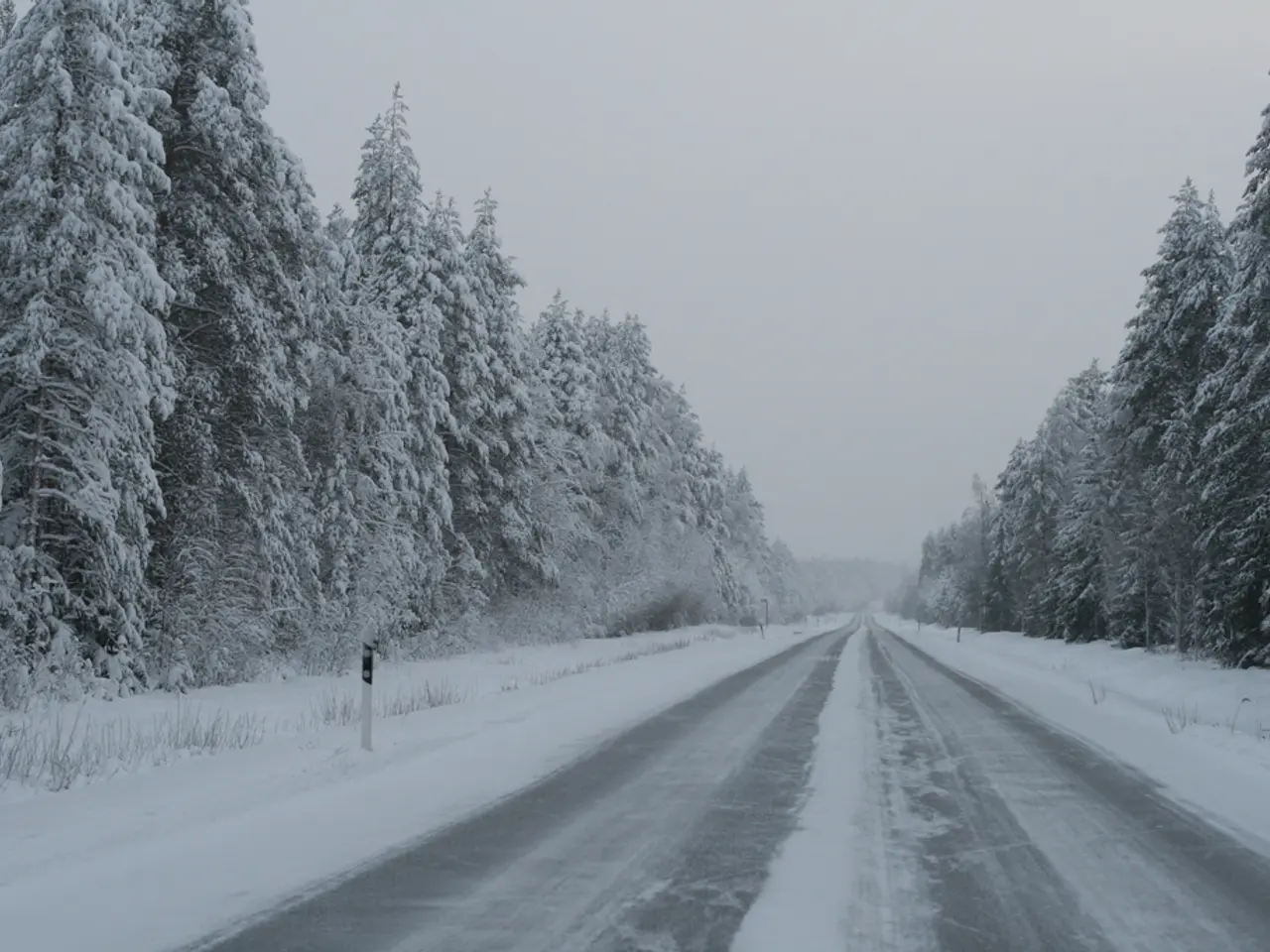Unusual snowfall in Atacama Desert pushes world's strongest radio telescope into emergency operations
In the heart of the Atacama Desert, the driest place on Earth, an unusual weather event occurred in late June 2025. The Atacama Large Millimeter/submillimeter Array (ALMA) observatory, a world-renowned scientific facility, experienced a significant snowfall—the first of its kind in over a decade [1][2][3].
This weather anomaly, triggered by unusual atmospheric instability affecting northern Chile, led to the temporary halt of scientific operations as the observatory activated its "survival mode" safety protocols to protect its 66 high-precision antennas from potential damage caused by heavy snow and strong winds [1][2].
While it is currently too early to definitively link this specific snowfall directly to global warming, experts note that climate models predict shifts in precipitation patterns in the Atacama region. These models suggest an increase in the frequency of such extreme weather events may occur, even in this hyper-arid desert historically known for extremely low annual precipitation [1][3]. This points to a broader trend that climate change could be contributing to more frequent and intense weather anomalies impacting the region.
The operational impact on ALMA includes the suspension of observations during extreme weather, the repositioning of antennas downwind during storms to minimize damage risks from snow accumulation and wind, and post-storm inspections of each antenna before resuming observations to ensure safety and functionality [1][2]. Interestingly, while the snowstorm halts operations temporarily, the cold conditions afterward reduce humidity, which is beneficial for radio telescope observations [1][2].
This evolving situation calls for monitoring climate trends closely to forecast and manage future operational risks at the ALMA observatory caused by extreme weather [1][3][4]. The snowfall occurred over ALMA's Operations Support Facility, located at an altitude of 9,500 feet (2,900 meters) and about 1,050 miles (1,700 kilometers) north of Santiago [1]. ALMA's radio telescope array is typically located on the Chajnantor Plateau, a desert plain at 16,800 feet (5,100 m) in Chile's Antofogasta region.
The high plateau shared by Chile, Bolivia, and Peru typically experiences snowstorms during two seasons: in February and from June to July. However, the recent snowfall at ALMA's base camp, located at 3,000 meters (9,840 feet), is much less frequent [1]. The fact that the snowfall halted operations at ALMA raises questions about the array's operations as the climate warms.
In conclusion, the recent rare snowfall at ALMA underscores the growing challenges extreme weather events pose to high-precision scientific facilities. It emphasizes the necessity for continued adaptation and preparedness in observatory operations to mitigate risks related to evolving climate patterns [1][3].
**Key points:**
| Aspect | Details | |-----------------------------|-------------------------------------------------------------------------------------------| | Event | Rare snowfall in Atacama Desert at ALMA (first in over a decade) | | Operational Impact | Temporary halt of scientific observations; antennas repositioned; inspections post-storm | | Climate Change Connection | Models predict more frequent extreme precipitation events, though direct attribution pending| | Potential Long-term Effects | Need for heightened adaptation due to increasing weather variability |
Science and environmental science communities are closely monitoring the occurrence of unusual weather events, such as the recent snowfall at the Atacama Large Millimeter/submillimeter Array (ALMA) observatory, due to its potential connection to climate change. Climate models indicate shifts in precipitation patterns in the Atacama region, suggesting an increase in the frequency of extreme weather events like this snowfall, even in hyper-arid regions. This points to a broader trend that climate change could contribute to more frequent and intense weather anomalies impacting various environmental areas, including the weather.








